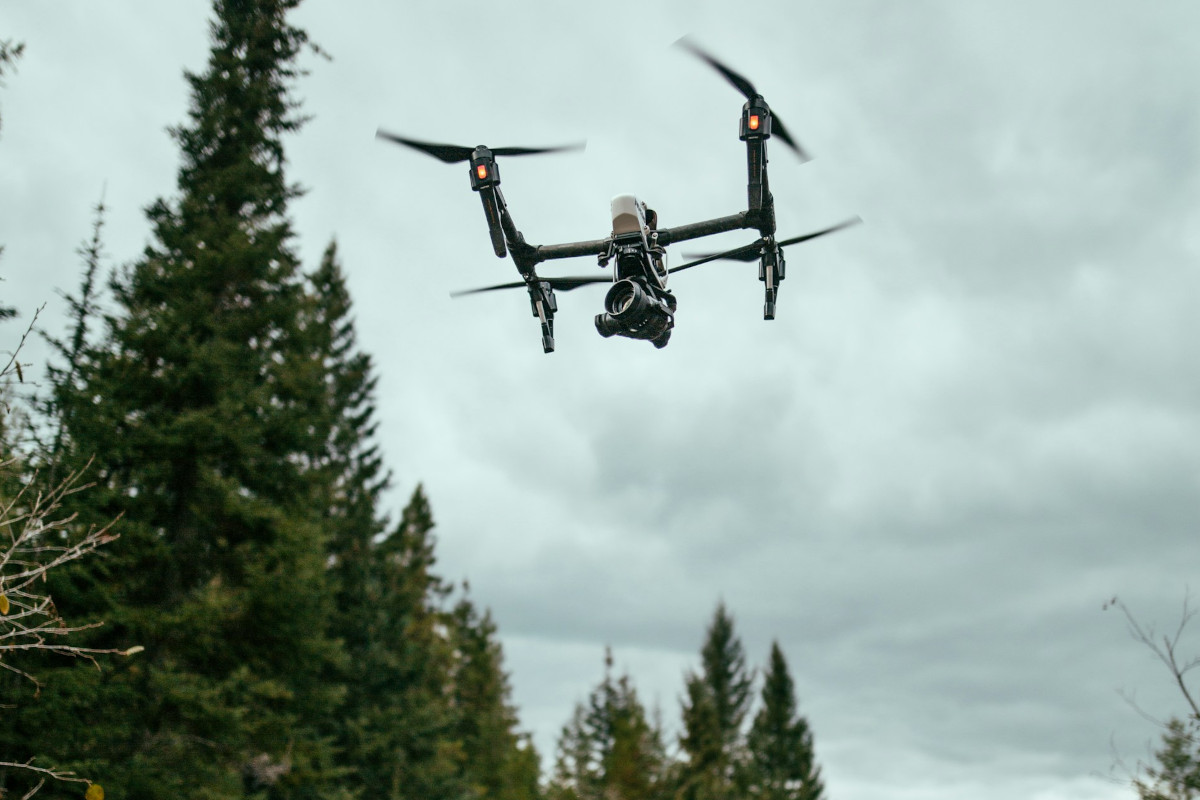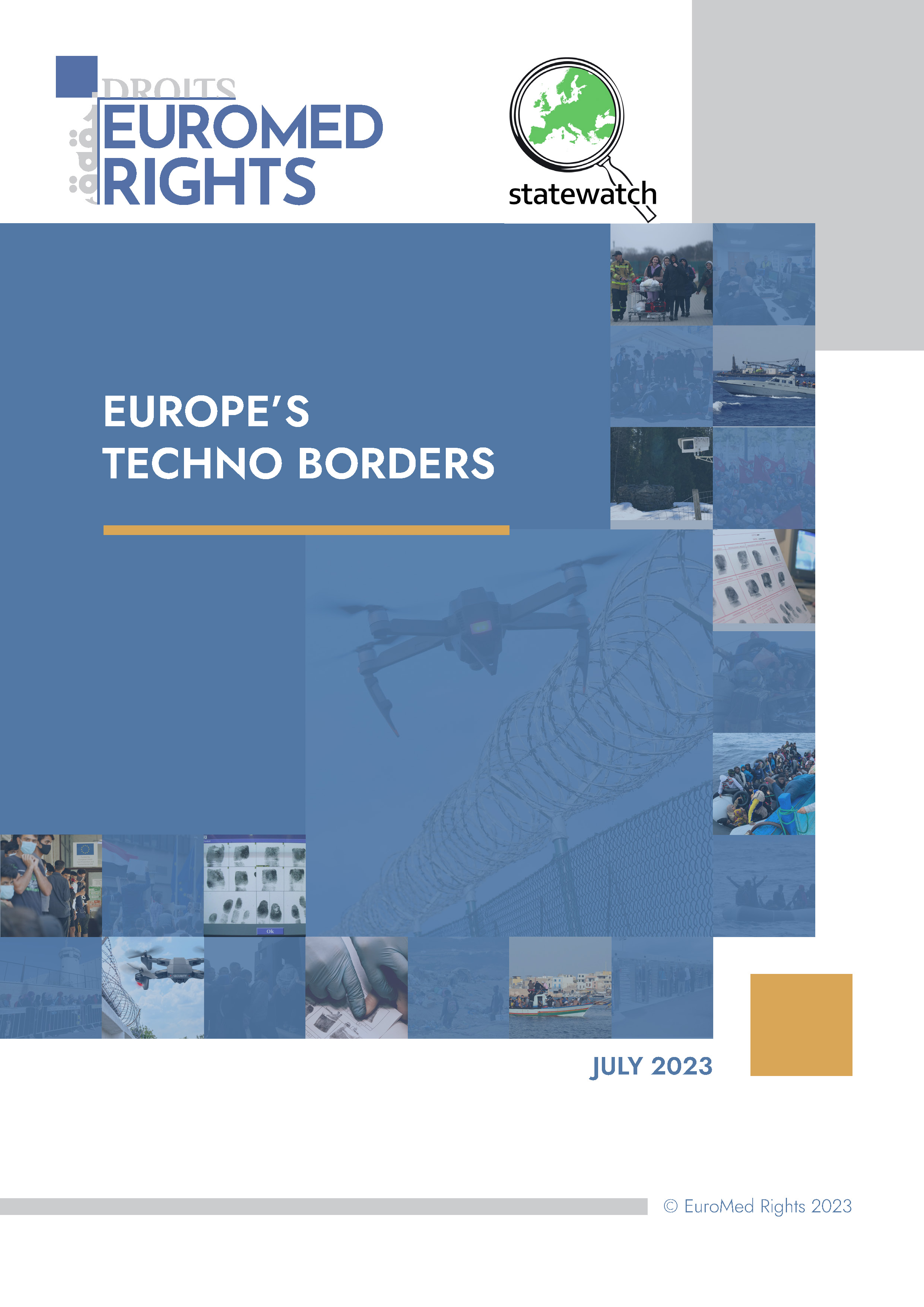Automating the fortress: digital technologies and European borders
Topic
Country/Region
06 June 2024
The fortification of Europe’s borders is inherently linked to the use of digital technologies. Indeed, the process would be unthinkable without them. From the biometric passports and automated gates used at border crossing points to the drones, sensor systems and detection technologies used to prevent and detect unauthorised migrants, digital technologies are crucial to a political project that seeks to give state authorities increased knowledge of – and thus control over – foreign nationals seeking to enter the EU. Vast quantities of public funding have been used to develop and deploy these technologies, and unless there is significant public and political opposition to the project, it is likely that the EU will provide far more money in the years to come. Given the harm caused by the ongoing reinforcement of Fortress Europe, and the myriad more beneficial ways in which those funds could be spent, that opposition is urgently needed.
Support our work: become a Friend of Statewatch from as little as £1/€1 per month.

Image: Gisti
This article was first published in French in Plein Droit, the magazine of Gisti, and is adapted from the Statewatch report Europe's techno-borders.
The comfort of control: “managed migration”
In airports, ferry terminals and border crossing points around the EU, posters can be seen on walls advertising the merits of the Schengen Information System (SIS) for improving the authorities’ ability to “manage migration”. The SIS is the world’s largest law enforcement database and contains hundreds of millions of alerts on missing and wanted objects and people, entered into the system by member states, though proposals for alerts can also come from Europol and foreign law enforcement agencies.[1] The system includes “alerts for refusal of entry and stay on third-country nationals,”[2] or as they used to be called, “unwanted aliens.”[3] At the end of 2022 there were over one million alerts on people in the system, and more than half of those concerned foreign nationals who should be refused entry.[4]
Everyone who crosses the EU’s borders is supposed to have their details checked against the SIS, but compared with what is in development, this is a rather simplistic method of managing migration. Those who require a visa or, in the future, a “travel authorisation” to enter the EU, will have their data parsed by algorithmic and machine learning technologies. These techniques, which will be integrated into the Visa Information System (VIS) and the European Travel Information and Authorisation System (ETIAS), are intended to detect potentially risky individuals for further questioning, or to prevent them from travelling in the first place.
This is undoubtedly an invasion of privacy and it is far from clear that the technologies being developed will work as promised by their advocates. They have been touted by some of their proponents as allowing for a more egalitarian approach to regular migration: rather than simply categorising people on the basis of their nationality as requiring a visa or not, the increased use of personal data will make more individualised assessments possible, ensuring that people are not simply refused because of their country of citizenship. However, even if this were possible, there is little guarantee that other forms of exclusion would cease to function – for example, based on class and wealth.
While these technologies are undoubtedly being deployed for the purposes of control, it is a form of control that is intended to facilitate migration, carefully managed by the watchful eye of the state. Hand over your data, subject yourself to various forms of search and screening, and you may be allowed to enter the EU, subject to various restrictions and conditions (for example, related to employment, length of stay, or access to public services). Indeed, in 2021, 2.3 million people entered the EU in this way.
Control for exclusion
However, digital technologies are also used for a more violent form of control, one premised on exclusion and denial. For the migrants and refugees deemed unwanted or unnecessary by European governments, digital technologies are deployed to detect, deter and repel them. Drones, cameras, social media monitoring, satellite imagery and networks of sensors form part of an elaborate surveillance architecture that is being extended and more deeply entrenched. Those who do manage to enter the EU are, like those taking “regular” journeys, subject to biometric registration and comparison of their personal data against national and international databases. If they are deported, international data-sharing systems are increasingly being used to facilitate that task.
Amongst the people who try to cross Europe’s borders irregularly are many who will have had their visa applications refused, or who have never even tried to acquire one, knowing that they will be refused. They may have built a life in the EU, only to be deported and, seeking to re-enter, have to do so irregularly due to their data being stored in the SIS. Due to upgraded security features in passports and the increasing use of biometric data (primarily fingerprints and photographs) to regulate border crossings, false passports are more expensive to acquire and increasingly difficult to use. It is because of these forms of control that practically every person granted international protection in the EU will have had no ability to travel “regularly” to claim asylum.
Thus, people end up in little rubber boats, retired fishing vessels, are hidden in the back of vans or end up walking for miles through inhospitable terrain to cross borders. Multiple means are used to try to detect them: EUROSUR, the European Border Surveillance System, interconnects national and EU surveillance assets including drones, cameras, sensors and other types of data-gathering technologies, with National Coordination Centres (NCCs) connected to a central hub operated by Frontex. It is also used for “pre-frontier surveillance,” aimed at ensuring the EU’s “situational awareness” extends far beyond its borders.
The authorities have also taken to monitoring the internet, and social media in particular, to try to detect migrant smugglers and determine the routes and methods they use to bring people into the EU. The EU Asylum Agency, when it was still known as the European Asylum Support Office, fed an algorithm with information from countries of origin and transit, data scraped from social media, real-time information on arrivals at the EU’s external borders, and data on previous outcomes of asylum applications in the EU.[5] It sought to predict likely numbers of asylum applications a month in advance and medium-term scenarios, but the European Data Protection Supervisor (EDPS) halted the project for breaching privacy rights.[6]
There is still clear interest in the idea, however: a 2022 academic paper on the same topic lists an EASO staff member as co-author;[7] the EU-funded research projects MIRROR and PERCEPTIONS are working with similar technologies; and Frontex has demonstrated to MEP delegations how it monitors social media “in order to be aware of groups of persons organising in order to move towards the EU external borders.”[8] The agency’s 2022-24 work programme refers to “media monitoring and reporting including open-source intelligence (OSINT).”[9]
Tools and techniques of this type are also exported abroad. Frontex is aiding the development of Risk Analysis Cells in multiple African states. These are “to collect and analyse data on cross-border crime and support authorities involved in border management. This includes information on illegal border crossings, document fraud, trafficking in human beings and other types of cross-border crime,” and it is likely that in the future the information they gather will be fed into EUROSUR.
The human cost of the deterrence and exclusion that these technologies facilitate is well-documented. The Mediterranean, under constant surveillance by Frontex and national aeroplanes, helicopters and drones, is the deadliest border in the world. The brutal violence and humiliation used against people trying to cross Greece’s land and sea borders has injured and traumatised thousands of people; similar methods have been deployed at the Polish and Lithuanian borders. People have frequently been killed or injured at Spain’s borders with Morocco, in Ceuta and Melilla, or died at sea trying to cross from West Africa to the Canary Islands. And these more immediate forms of violence come alongside the slow, everyday violence of people living in camps and informal settlements at Europe’s borders, without access to healthcare, support services or other basic necessities.
The public purse: a bottomless pit
European politicians often bemoan the fact that people smugglers charge migrants and refugees huge fees for dangerous journeys into the EU. Yet those same politicians have, time and again, approved spending vast quantities of public money in ways that make irregular journeys not only inevitable, but increasingly dangerous. The infrastructure, devices, knowledge and personnel that constitute the EU’s technologies of control have been supported and maintained over the last three decades through huge amounts of public funding.
In the current budgetary period (2021-27), the total value of the different EU budgets that can be used for border and migration control purposes has increased by 94% on the previous period (2014-20), from €58.5 billion to €113 billion. Not all of that money will be spent for those purposes, but a study carried out for the European Commission in 2022 found that more than €7.7 billion was spent on “the management of European borders” between 2015 and 2020, and “the biggest parts of this budget come from European funding.”[10] In short: the EU’s own budget is the biggest driver of border reinforcement and militarisation in the EU.
Figures published by the European Commission show the total due to be distributed to the member states from border budgets. Mediterranean member states are some of the biggest beneficiaries of the funding increase. Funding for the Greek authorities has skyrocketed from almost €303 million (2014-20) to more than €1 billion (2021-27) – an increase of 248%, despite the ongoing violations of human rights at Greece’s borders. France is to receive almost 200% more than it did in the 2014-20, obtaining nearly €207 million; Croatia will receive almost 100% more, obtaining €155 million; and Spain’s share will increase by 34%, to some €325 million. Recently, €259 million in additional migration funding was announced, with €141 million for “electronic surveillance systems at external land borders” in Bulgaria, Croatia, Greece, Lithuania and Hungary – all countries with appalling records in the treatment of migrants and refugees.[11]
While these budgets are focused on the reinforcement of border control, including through the purchase and deployment of new technologies, public funding is also used to develop new border technologies and techniques. Through its security research programme, currently known as Civil Security for Society, the EU has invested in the development of automated lie detectors to be deployed at border crossing points, automated border control gates, systems using “big data” to try to predict migration movements, and swarms of drones for border surveillance. MIRROR and PERCEPTIONS, the two projects noted above, are both funded through the security research programme.
Between 2014 and 2022, the EU provided more than €250 million to 49 projects seeking to develop border technologies. Think tanks and research institutes feature prominently amongst the entities that have benefited from that funding. The Greek Center for Security Studies (€12.8 million), France’s Commissariat à l'énergie atomique et aux énergies alternatives (€8.4 million), TNO from the Netherlands (€4.5 million), Germany’s Fraunhofer Institute (€4.4 million) and the Centre for Research and Technology Hellas (€4.3 million) make up the top five recipients. They are joined by a range of private companies, two universities, and even the NATO Science and Technology Organisation.
New laws, future plans
Digital technologies will become increasingly intertwined with European border and migration control through an array of new laws that are currently under discussion. Meanwhile, consultancy studies and planning papers give some indication of how policy-makers would like to see Europe’s techno-borders develop in the coming decades.
Legislation that will further propel the use of digital technologies includes the revamped Eurodac Regulation, the Screening Regulation, the revised Schengen Borders Code and the Artificial Intelligence Act. The proposal to transform Eurodac would see more types of data gathered from a far broader group of people (all irregular migrants, along with asylum-seekers), for storage in an expanded database which, in turn, will be made part of the EU’s “interoperability” architecture, facilitating the searching and interconnection of different datasets. The Screening Regulation will introduce mandatory checks against European and international databases for all those irregularly crossing the external borders, whom it is also increasingly likely will end up in detention.
Changes to the Schengen Borders Code provide various options for member states who wish to avoid reintroducing internal border controls in the Schengen area. These include more extensive patrols and identity checks in border areas (thus encouraging racial profiling), a process that will increasingly involve biometric identification devices.[12] The new rules would also make it easier for states to carry out summary returns of migrants engaged in “secondary movements” in the Schengen area. The proposal has been roundly condemned by human rights organisations.[13]
The Artificial Intelligence Act aims to address the risks of certain uses of AI and to establish a legal framework for its trustworthy deployment, thus stimulating a market for the production, sale and export of various AI tools and technologies. In relation to migration and asylum, the proposal makes no reference to the need to uphold international legal obligations, and does not contain particularly stringent provisions to govern the use of AI technologies for immigration, asylum and border control purposes. A coalition of human rights organisations has been working to “ban the use of experimental tech against people crossing borders and effectively regulate to ensure AI is used with safety and accountability.”[14]
The increasing digitalisation of borders and border controls is unlikely to end with these laws, however. Multiple studies commissioned by the European Commission and Frontex set out the intended direction of travel in the future: the increasing integration of “artificial intelligence” into administrative and decision-making procedures; ever-more invasive surveillance technologies for border control purposes; and the introduction of new forms of biometric identification to further automate border controls and ease identity checks.
Alternatives needed
The European Commission is seeking massive increases to the current budgets, arguing that they are “at the point of exhaustion,”[15] and at some point within the next two years it will announce proposals for the budgets for the next financial period (2028-34). It is almost certain that further spending increases will be sought as European politicians, trying to profit from fear and division, cling ever-tighter to the downward spiral of exclusion and expulsion. The EU’s new Integrated Border Management Strategy gives a fundamental role to new technologies, and this will provide the framework for the increasing integration and entrenchment of digital technology into the border regime – a move that will no doubt be welcomed by the myriad companies and corporations developing and marketing new technologies of control.
The Kenyan environmental activist Wangari Maathai once said: “We already have a debt crisis owing billions to foreign banks. And people are starving, they need food, they need medicine and they need education. They did not need a skyscraper to house the ruling party and a 24-hour television station.”
This can be paraphrased well into a discussion regarding the ongoing reinforcement, digitalisation and automation of Europe’s border controls. Living standards are declining, social services are under-funded and neglected, and vital public infrastructure is crumbling. People need warm homes, good food, stimulating education and meaningful work. Do they really need an algorithmic profiling system to screen foreign nationals, an integrated, continent-wide surveillance system, and swarms of surveillance drones to patrol the borders?
Author: Chris Jones
Notes
[1] https://www.statewatch.org/news/2022/april/eu-europol-and-the-schengen-information-system-new-powers-to-propose-information-alerts/
[2] https://eur-lex.europa.eu/legal-content/EN/TXT/?uri=CELEX:32018R1861#d1e1987-14-1
[3] https://www.statewatch.org/news/2014/september/eu-schengen-information-system-41-000-people-subject-to-discreet-surveillance-or-specific-checks/
[4] p.15, https://www.eulisa.europa.eu/Publications/Reports/SIS%20II%202022%20Statistics%20-%20Report.pdf
[5] https://euobserver.com/migration/146856
[6] https://www.statewatch.org/media/documents/news/2019/dec/eu-edps-reply-easo-ssm-12-19.pdf
[7] https://www.nature.com/articles/s41598-022-05241-8.pdf
[8] https://www.statewatch.org/news/2020/july/borders-budgets-and-beyond-libe-report-sheds-light-on-frontex-s-priorities-for-implementing-its-new-mandate/
[9] https://frontex.europa.eu/assets/Key_Documents/Programming_Document/2022/Single_Programming_Document_2022_2024.pdf
[10] https://op.europa.eu/en/publication-detail/-/publication/db2efbc8-070a-11ed-acce-01aa75ed71a1
[11] https://home-affairs.ec.europa.eu/news/commission-provides-over-eur-250-million-additional-funding-reinforce-border-security-and-migration-2023-11-20_en
[12] https://www.statewatch.org/publications/reports-and-books/building-the-biometric-state-police-powers-and-discrimination/
[13] https://picum.org/joint-civil-society-statement-schengen-borders-code/
[14] https://protectnotsurveil.eu/
[15] https://www.statewatch.org/news/2023/august/european-commission-wants-to-boost-border-spending-by-billions-of-euros/
Our work is only possible with your support.
Become a Friend of Statewatch from as little as £1/€1 per month.
Further reading

Border security with drones and databases
The EU’s borders are increasingly militarised, with hundreds of millions of euros paid to state agencies and military, security and IT companies for surveillance, patrols and apprehension and detention. This process has massive human cost, and politicians are planning to intensify it.

Europe's techno-borders
The digital technologies deployed as part of Europe’s techno-borders underpin invasions of privacy, brutal violations of human rights, and make the border ‘mobile’, for example through the increased use of biometric identification technologies, such as handheld fingerprint scanners. This report analyses the past, present and future of Europe’s “techno-borders,” the infrastructure put in place over the last three decades to provide authorities with knowledge of – and thus control over – foreign nationals seeking to enter or staying in EU and Schengen territory.
Spotted an error? If you've spotted a problem with this page, just click once to let us know.

